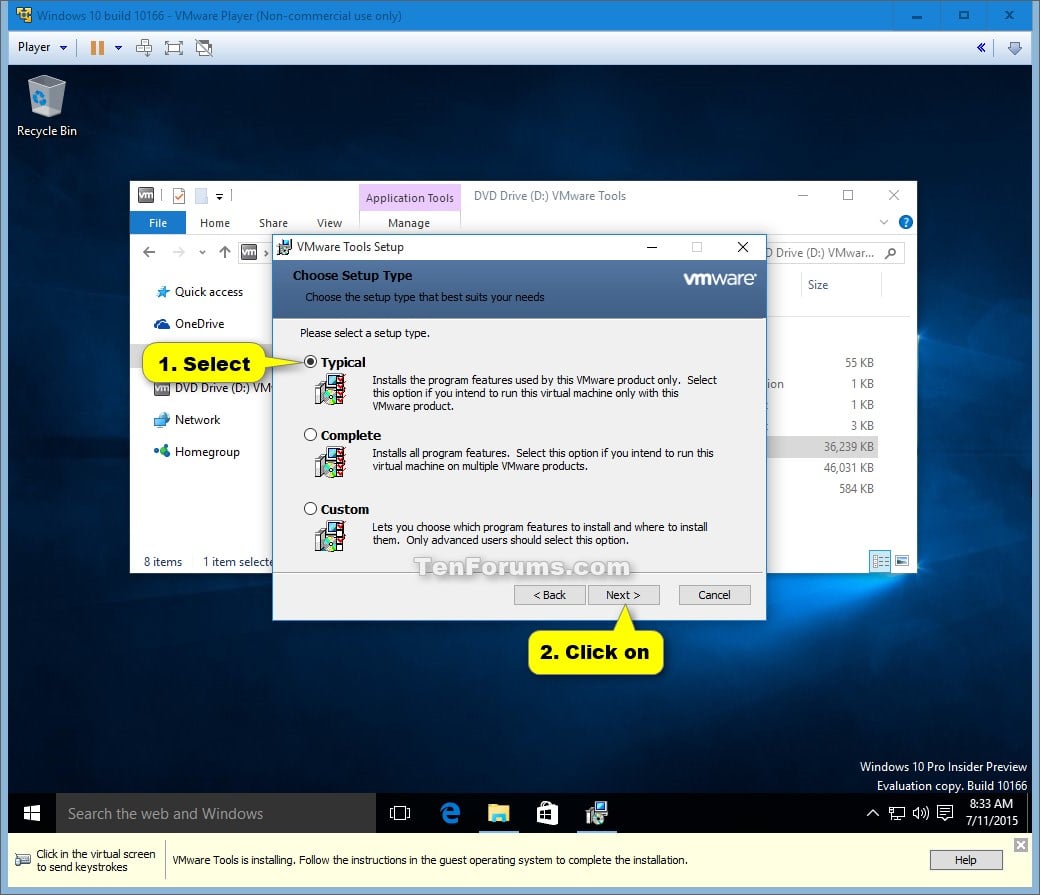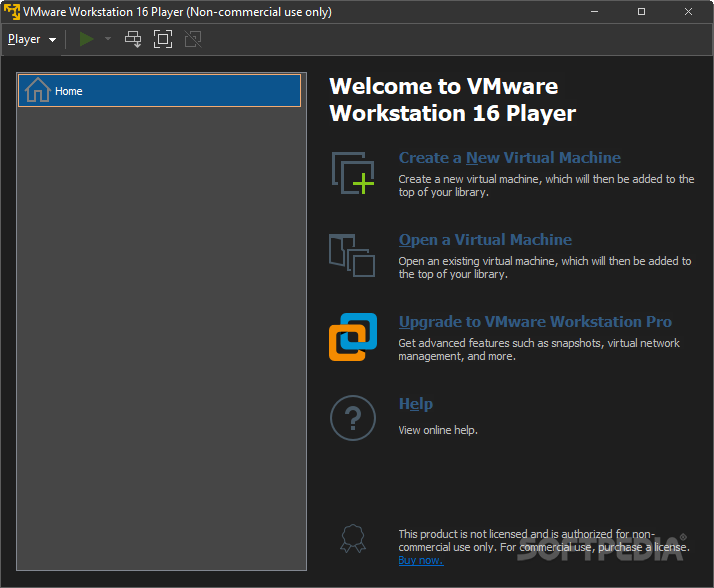

- #Vmware player for windows 10 how to
- #Vmware player for windows 10 install
- #Vmware player for windows 10 windows 10
The first thing I did was visit BinaryFork, of course 🙂 Optional Step: Install VMWare Tools Starting the VM can only be done from VMWare, of course, since the VM doesn’t have a physical On/Off switch.
#Vmware player for windows 10 windows 10
Shutting down, restarting, or suspending the VM can be done from the Windows 10 Start menu, the one inside the machine, or from the Player menu inside VMWare ( Player – Power). You’re set up now and can start working with your new VM. Don’t forget to click the “I Finished Installing” notification at the bottom of the VMWare Workstation Player. Follow all steps and in a matter of minutes, the VM will boot into Windows for the first time. The familiar Windows 10 logo will show up and soon you’ll see the first step of the Windows 10 installer.ġ1. The following screen is well known for users like me: Press any key to boot from CD or DVD… What are you waiting for? Press that Any key they keep mentioning.ġ0. This is where the Windows 10 ISO selected at the first step will be mounted automatically by VMWare.ĩ. The VM will now start and greet you with the Boot Manager.
#Vmware player for windows 10 how to
There’s also a chapter in this article about how to install them inside the VM.Ĩ. This will install them for VMware Workstation Player. Just about now you’ll get a prompt to download VMWare Tools. Here are the most important options, for CPU, RAM, and display/GPU.ħ. All these Hardware settings can be changed later (after you power down the VM), so don’t sweat too much about them. The default allocated resources are a bit light if you ask me (2 GB RAM and 2 CPU cores).Ħ. Before clicking Finish I suggest you customize the VM hardware first. At this step you’re getting a summary of your VM settings. Maybe you can consider choosing a bigger size from the beginning since the actually occupied space will depend on what you install, so you’re not wasting any space by selecting a bigger maximum size.ĥ. You can expand the size later on if needed, but it’s not super easy. I recommend you opt for splitting the VM drive into multiple files. Select a name and a storage location on the local computer for the VM files.Ĥ. In the next window click Browse to select the Windows 10 ISO image you’ve downloaded previously ( we have a tutorial on how to do that too).ģ. Both are free for personal use if you just want to try them.ġ. I only have experience with two programs for creating and running virtual machines: VMware Workstation Player and Oracle VirtualBox. In the corporate environment or for hosting providers is basically a must-do. You want to clone a system and try it on a different computer.Īnd these are just reasons for home use.You want to take advantage of snapshots (backups of the state of the OS at a certain point).You want to develop software for other platforms.You need to run old software on a really old OS.You want to try out new operating systems.If you’ve ever asked yourself why use a virtual machine, here are a few simple reasons: I tried to either see what MacOS looks like or a certain Linux distribution without having to risk messing with dual boot, or I was just trying to learn more about virtual machines.


I’m not an expert in VMs, not even close, but I’ve used them from time to time. 3 Guide for Installing Windows 10 on VMWare Workstation Playerįirst Question: Why Use a Virtual Machine?.2 Which Virtual Machine Software to use?.1 First Question: Why Use a Virtual Machine?.


 0 kommentar(er)
0 kommentar(er)
